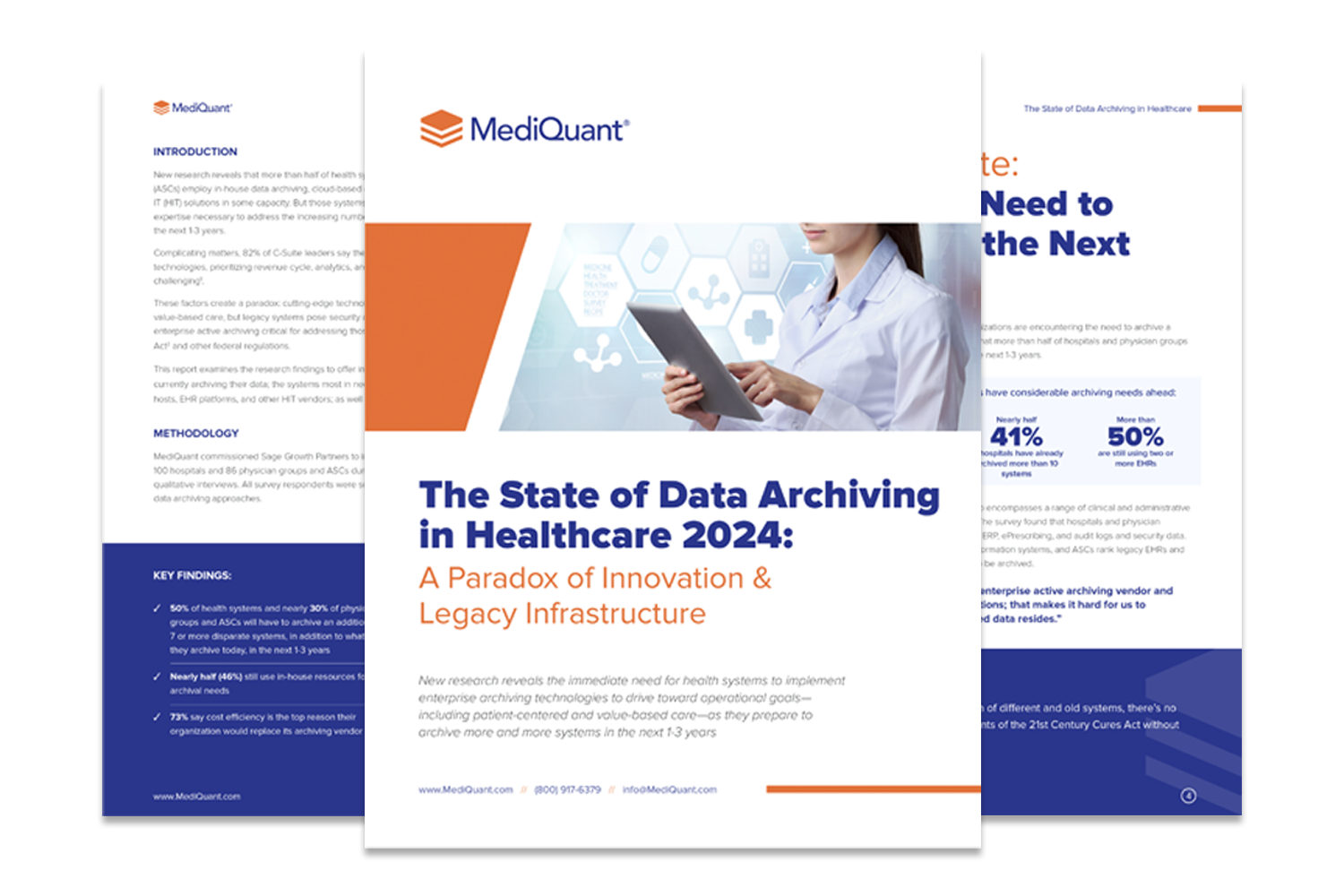By Jim Jacobs, President & CEO, MediQuant
Data has been called the new oil¹, then it became the new gold², and now it has even been likened to “the lifeblood of our species³.” Regardless of your favorite comparison, healthcare is at an inflection point in terms of transitioning raw data into a strategic asset: true knowledge.
I am witnessing a growing sense of urgency among CIOs as well as clinical and financial healthcare leaders to recognize that data is an important asset and use it accordingly. Why? Transforming data to be accessible and actionable is the only way to collectively build a promising future wherein artificial intelligence (AI), machine learning, and advanced analytics have nearly limitless potential.
Imagine harnessing decades worth of data for life-saving discoveries, such as pinpointing causes of dementia, detecting cancers earlier, treating Parkinson’s disease more effectively, or eradicating a range of other diseases. Healthcare as an industry is already generating approximately 30% of the world’s data and that is predicted to increase to 36% by 2025⁴. To put that in context: our industry’s data volume is expanding 11% faster than media and entertainment, 10% faster than financial services, and 6% faster than manufacturing⁵.
Now, it’s time to put our data to work. Healthcare leaders across multiple administrative, clinical, and operational functions, not just IT, need to ensure we don’t lose the opportunity to learn by moving what can be easily mistaken for old or unnecessary data into static, non-discrete formats, such as PDFs. Legacy healthcare data contains valuable insights that can empower future clinical decision making, but only when it’s structured as discrete data and accessible in an active archive. This enables providers to use AI, machine learning algorithms, or advanced analytics tools can be used to glean evidence-based insights from the ever-expanding health data sets.
Failing to make data actionable will only hold hospitals, health systems, and researchers back from driving breakthrough innovations in care delivery.
Achieving an AI-powered future, however, requires data governance and long-term data management. To gauge the current state of data, MediQuant commissioned Sage Growth Partners to survey 186 leaders across health systems, physician groups, and ambulatory surgery centers (ASCs). The research found that participating organizations need active archiving for significantly more systems in the next 1-3 years than they are currently managing⁶.

Despite the immediate need to maintain and access relevant data in more systems, a surprising number of organizations (55%) use HIT vendors, such as EHRs and cloud hosts, or in-house solutions (46%)⁷. Because none of those are purpose-built for data management, the systems have inherent limitations in terms of enabling innovation. Many are also ill-equipped to address the ongoing challenges healthcare organizations are facing, including interoperability, cybersecurity, regulatory compliance, and increasing M&A activity. Those limitations are correlated with our research finding that 67% of hospitals say they would like to replace or augment those systems⁸.
What health systems and physician groups need now to meet the urgent demand are robust technologies and expertise to support C-Suite strategies that make data actionable. The more that happens, and the more that CIOs and other executives understand the value of information as an asset, the better healthcare’s massive data sets will become for everyone.
I’ll share a favorite example. One health system leader explained to me recently that his organization is leveraging previously inaccessible patient accounting data to generate payer scorecards and analyze denials management. Applying AI algorithms to that data enables the team to pinpoint patterns that reveal where denials took place when they should not have. With that actionable information, the health system can highlight these instances to health plans to avoid leaving justifiable revenue on the table. That’s true knowledge—and this particular use case would not have been realistic as recently as two years ago.
As exciting as that is on the business and operational side of healthcare, what I’m most excited about for the future is what we don’t know: We don’t know how many AI use cases will emerge in the next few years. For clinical use cases, the sky’s the limit. How will all of our data inform AI in ways that improve access, affordability, and health equity? How will we as an industry leverage our data to enable people to live longer and be healthier and happier?
That is the future our industry needs to be building today by transforming the world’s largest data volumes into actionable and accessible sources of strategic information.
To read all of our original research, download the new report: The State of Healthcare Data Archiving 2024: A Paradox of Innovation and Legacy Infrastructure here.
Sources:
1. Data is the new oil of the digital economy, Wired
https://www.wired.com/insights/2014/07/data-new-oil-digital-economy/
2. If data’s the new gold, how do you use it to create value?, EY https://www.ey.com/en_ch/big-data-analytics/if-datas-the-new-gold-how-do-you-use-it-to-create-value
3. 2024 Manifesto: Towards a data universe, Data Universe https://www.datauniverseevent.com/en-us/attend/manifesto.html
4. The healthcare data explosion, RBC Capital Markets https://www.rbccm.com/en/gib/healthcare/episode/the_healthcare_data_explosion
5. The healthcare data explosion, RBC Capital Markets https://www.rbccm.com/en/gib/healthcare/episode/the_healthcare_data_explosion
6-8. The State of Data Archiving in Healthcare 2024, MediQuant
https://go.mediquant.com/2024-sage-report-mediquant


